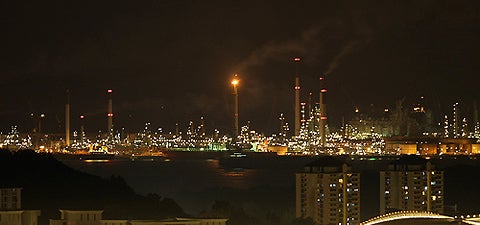
Ten years ago, the World Bank and the government of Norway launched an ambitious project to drastically reduce greenhouse gas emissions from a source few people thought much about. If you’ve driven past oil fields at night, you’ve seen the flames from gas flaring. But you might not have realized just how much greenhouse gas was being pumped into the dark – and how much of a natural energy resource was being wasted in the process.
Half a dozen major oil companies joined us in 2002 in creating the public-private Global Gas Flaring Reduction partnership, and we began working together to reduce the flaring. More than 30 government and industry partners are on board today.
Together, we have achieved a great deal in just the first decade.
- Gas flaring globally is down by almost 20% since it peaked at 172 bcm (billion cubic meters) in 2005.
- Since 2005, the reduction in gas flaring has avoided 270 million tons of greenhouse gas emissions.
- Last year alone, the partnership’s work avoided 85 million tons of CO2 emissions – the equivalent of taking 16 million cars off the road. (To put that in perspective, the total amount of CO2-equivalent released from gas flaring that year was estimated at 400 million tons.)
But that’s only half the story.
If the oil fields aren’t flaring off the excess natural gas, they have to put it somewhere. We’re helping them put the gas to use as a power source.
In the Republic of Congo, gas from the M’Boundi oil field that could have been flared off is now feeding two power plants through a 350 MW gas-to-power project. That project has brought electricity to over 300,000 people in Pointe Noire, lighting homes and shops, some for the first time, and changing lives.
The GGFR partners also invested more than $3 billion to cut gas flaring in Nigeria by 4 bcm over five years. Nigeria’s government, with support from the World Bank, provided partial risk guarantees for gas supply to public power plants. These guarantees, along with a whole package of policies, are moving the country towards a more balanced domestic gas market that will lead to more electricity.
So gas flaring is an energy and sustainable development issue, and of course it’s a climate issue. The GGFR partnership also plays another important role: it’s bringing the public and private sectors together. Mexico can celebrate a 66 percent reduction in gas flaring over the last two years, mainly from the Cantarell Field, because of a collaborative effort between the Secretary of Energy, Pemex, regulators, and GGFR.
The work to reduce global gas flaring is making progress, but it still has a long way to go, as the numbers show: In Sub-Saharan Africa alone, the amount of gas flared every year is equivalent to half the continent’s power consumption. Imagine if that gas was being utilized for power instead and what it could do for the continent.
Let's aim to reduce global flaring by another 30 percent in the next five years, from 140 bcm today to 100 bcm or less by the end of 2017, and utilize that fuel in this "golden age of gas." We can't afford to waste it any more.
Getting there will require more work developing effective domestic gas markets and prices, harnessing viable technologies, and fostering partnerships and collaboration across industries and between governments and the private sector. It also will require more firm commitments and involvement from oil-producing companies.
Last month, World Bank President Jim Yong Kim agreed to co-chair the UN’s Sustainable Energy for All initiative together with UN Secretary General Ban Ki-Moon. Supporting gas flaring reduction is one of the commitments of the SE4All initiative, and it’s a World Bank commitment going forward, as well.
Rachel Kyte
Vice President for Sustainable Development
www.worldbank.org/sustainabledevelopment
Twitter: @rkyte365
Photo credit: Shiny Things/Flickr Creative Commons


Join the Conversation